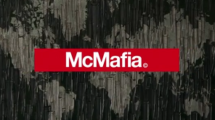There will be very few surprises in this list. I rely on very few instruments and tend to want to get right inside the workings of them, meaning that I stay with them for a long time. Nevertheless, here’s where I am with my virtual instruments.
01. Native Instruments – Kontakt

Kontakt really is about as perfect as samplers get. The fact that it’s the industry standard means that there are far more libraries available than you’d ever need. The Native Instrument Komplete package alone comes with half a dozen or so pianos, each with a plethora of presets and settings. Whether you’re using it massive orchestral arrangements, soundscapes, foley or vintage synth emulation, there are dozens, maybe hundreds, of options for each.
Then, when you’re ready to make your own instruments, it’s a whole new world. It’s literally a five minute tutorial to get your first instrument made. If you really want to get under the hood and add scripts, complex effects, and detailed audio manipulation, you can go as deep as you like. The resources online to do this are massive.
I’ve been enjoying making my own Kontakt instruments of things as varied as a home-made synth, percussion out of me banging the lid of a BBQ, or the chimes from the local kid’s park. It makes sampling easy. Definitely an essential purchase.
02. Xfer Records – Serum

There’s really no studio or style of music that wouldn’t benefit from having Xfer’s Serum added to it’s arsenal. While it’s labelled as a wavetable synthesiser, the truth is that it’s so much more.
The ability to import / edit / manipulate your own wavetables means that the possibilities for sound creation are infinite. For sound design experts, this is a dream environment.
For old school synth heads, it’s equally attractive. The two main oscillators, noise and bass generators, the modulation possibilities, the in-built filter and effects are superb. It’s difficult to find parameters that can’t be controlled by something else. This gives you the choice of anything from a simple sine wave to a unison voiced, fully modulated, French LPF’d, multi-effected never-ending growling pad. Be assured that there’s so much more to this than EDM growling bass.
The option to run Serum through external effects which can add a retro / vintage feel to it takes the edge off any fears I may have had about it being too ‘clean’ a sound.
Most of my tracks have had Serum in it at some point. (My Cubase template has sine/triangle/ramp/square set-up to write the lines for my own synth.) It may be a striking lead or a subtle pad, but it’s always in there somewhere.
03. Steinberg – Padshop 2

There are scores of granular synths available just now, all with their own unique angle. Padshop 2’s flexibility, ease of use and depth of features makes it a front-runner. The fact that it comes free with Cubase Pro makes it feel like cheating.
The options to manipulate almost all settings by internal or external modulation is incredible. Each patch can have two different layers meaning you can really get some interesting other-wordly sounds going on. I’m using this for drones and soundscapes but also on rhythmic movements.
This is what I used to create the main janglescape sound in the track ‘Cells‘.
04. Xfer Records – Cthulhu

Every one of my Cubase templates has a folder at the top called Idea Generation. This sits at the top. I spend a lot of time building up chord palettes and then using Cthulhu to build up tune structures. You can easily map the Cthulhu output to your choice of instrument. I’ve been using Spitfire Audio’s Intimate Grand Piano and Epic Strings to try out chords.
The chord editor is intuitive and user-friendly, allowing you to create and customize their chord progressions effortlessly. Additionally, the arpeggiator function adds a dynamic element to the chords, transforming static progressions into lively and engaging sequences. The ability to sync Cthulhu with your DAW’s clock ensures seamless integration into your workflow.
I’ve used this for many years. It’s become one of a few different ways in which I can inspire myself when coming up with a new tune.
Plug-ins of note
Four plug-ins may not seem like a lot, but Kontakt covers many, many diverse libraries. I’m also focusing on using more live instruments, meaning that I’m dealing with audio files rather than in-the-box instruments. Having said that, I have been impressed by a few other instruments which are worth mentioning.
I’ve had a lot of mileage from Spitfire Audio’s Cinematic Frozen Strings, Epic Strings and Intimate Grand Piano, all from their Originals range. These are good options for those on a budget, or if there’s a very specific sound that you’re after without buying a full Albion library. The £29 for Frozen Strings, for example, is a much more intimate, focused and bank account friendly way of acquiring “edge of silence” fragility than the full £399 for Albion Tundra. I’m not a huge fan of the Spitfire interface, however, but after the feature-filled Kontakt, any other sampler is going to look rather shallow.
Native Instruments’ Battery 4 is a staple percussion instrument. Brainworx’s bx_oberhausen is a fun take on the Oberheim SEM analog synth. UAD’s PolyMAX synth also has loads of subtractive LFO vintage sounding noises to platy with. Great things to sit and play with and see where it takes you.
The best thing with all of these (with the possible exception of Kontakt / Komplete) is that they’re all suitable for a lower budget. You can even use Splice to buy Serum with monthly payments while you use it.
What are your go-to VST instruments?



